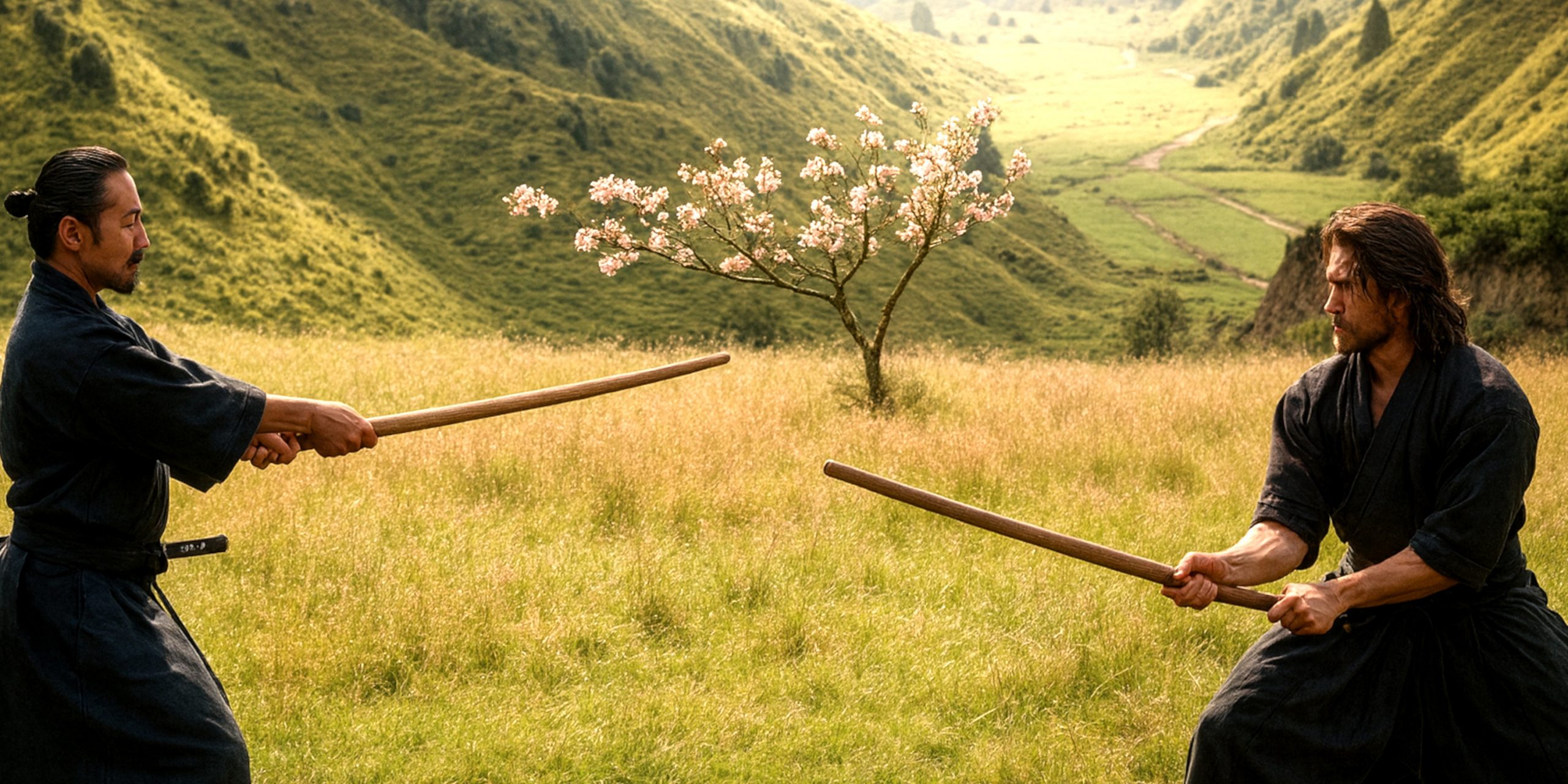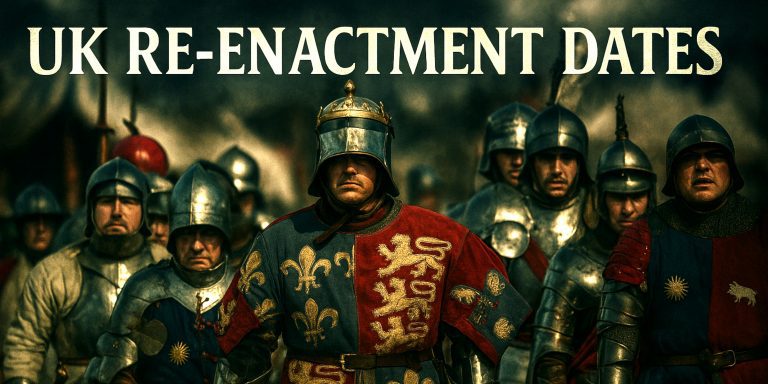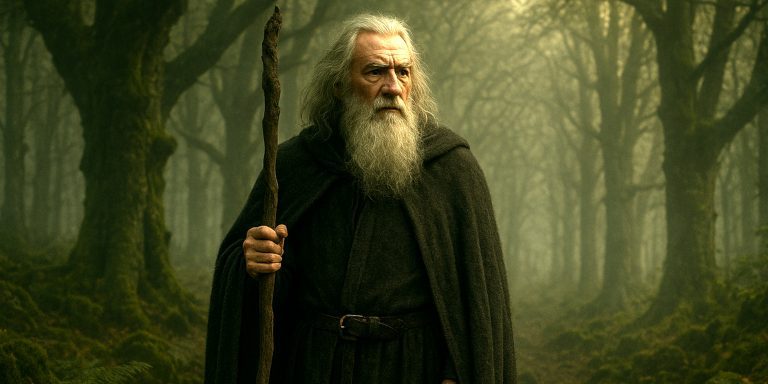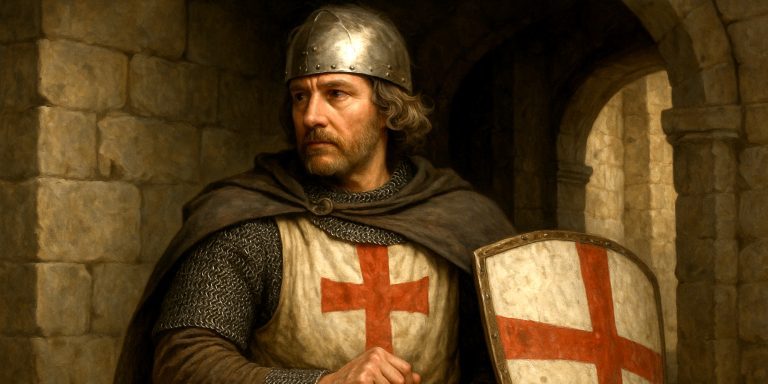
The Last Samurai (2003) attempts to portray the final years of Japan’s samurai warrior class during the late 19th century. While the film takes creative liberties, it does present a rich display of traditional Japanese weaponry. The weapons shown are not just cinematic props but hold historical weight, each reflecting different aspects of samurai warfare, social status, and philosophy. This article explores the most prominent weapons featured in the film, including the katana, naginata, yumi, and others, assessing their historical accuracy and role in samurai combat.
Katana: The Soul of the Samurai
The katana is the most iconic samurai weapon and features prominently throughout The Last Samurai. It is used not only in battle but also as a symbol of honour and identity.
- Blade length: Typically around 70–73 cm
- Curvature: Gentle, for effective cutting and fast draw
- Construction: Folded steel (tamahagane), differential hardening for a sharp edge and resilient spine
- Grip: Two-handed, wrapped in ray skin and silk cord
The katana in the film is given significant reverence, particularly in scenes involving Katsumoto and Algren. This mirrors the historical view of the katana as a spiritual extension of the samurai’s being. While some of the fight choreography exaggerates the speed and fluidity, the swordsmanship depicted draws loosely from kenjutsu and modern kendo principles.
Naginata: The Polearm of Choice for Retainers and Onna-Bugeisha
The naginata, a polearm with a curved blade, appears in several scenes, especially in battles involving large formations or defensive stances.
- Blade length: 30–60 cm
- Pole length: Typically 120–240 cm
- Function: Slashing, sweeping, and thrusting
- Users: Both male warriors and samurai women, particularly in the Edo period
In the film, the naginata is used both in battle and in training sequences. Its presence is historically accurate, especially for castle defence and open-field combat. The weapon’s wide reach and versatility made it ideal for infantry against cavalry and close formations.
Yumi: The Asymmetrical Longbow
Traditional Japanese archery plays a role in the samurai’s martial culture, and the yumi appears briefly in scenes depicting training and early battle sequences.
- Length: Over 2 metres
- Material: Laminated bamboo and wood
- Draw technique: Unique thumb draw with the bow held lower than centre
- Use: Mounted and foot archery (kyujutsu)
While its role is minor in the film, the yumi represents a key part of the samurai’s earlier warfare traditions. Archery was essential before the rise of mass infantry and firearms. Its inclusion gives historical texture even if the film favours melee combat.
Tanto and Wakizashi: The Companion Blades
Shorter Samurai blades such as the tanto and wakizashi are occasionally visible on the belts of samurai characters. These weapons served both practical and ceremonial roles.
- Tanto: A dagger used in close combat or ritual suicide
- Wakizashi: Paired with the katana to form the daisho (the two-sword set), used indoors or in tight quarters
- Construction: Similar materials and forging techniques to the katana
While these blades are not central to the action, their presence on screen acknowledges their role in samurai daily life, personal defence, and ritual practice.
Yari: The Straight-Bladed Spear
Though less prominent than the katana or naginata in The Last Samurai, the yari is seen in battlefield scenes. Its inclusion is accurate and grounded in Japan’s military history.
- Blade types: Straight, tri-edged, or barbed
- Length: Shaft length varied, often over 2 metres
- Usage: Versatile for thrusting and forming spear walls
- Historical role: Main weapon for ashigaru (foot soldiers), later adopted by samurai
The yari was one of the most effective battlefield weapons during Japan’s feudal wars. Its practical utility made it a staple of samurai arsenals despite being overshadowed in popular culture by the katana.
Firearms: The Matchlock (Tanegashima)
Although the samurai are often associated with traditional bladed weapons, firearms are part of the historical context in The Last Samurai. The tanegashima matchlock is seen in use by Imperial forces and also within Katsumoto’s rebel camp.
- Origin: Introduced by Portuguese traders in the 16th century
- Type: Matchlock arquebus
- Use: Effective in volley fire, less so in rain or damp weather
- Historical impact: Mass use at battles like Nagashino signalled the decline of cavalry charges
The film’s tension between the sword-wielding samurai and rifle-armed Imperial troops is a reflection of Meiji-era reforms. The presence of firearms is accurate for the period, though the samurai resistance to them in the film is heightened for narrative effect.
The Seven Swords Takeaway
The Last Samurai presents a romanticised but visually grounded depiction of samurai weaponry. The katana, naginata, yumi, and other arms are used not just as tools of war, but as markers of identity and tradition. While some combat choreography is stylised for cinema, the core selection of weapons remains faithful to the late samurai era. The film reflects a moment in history when Japan stood between worlds: the disciplined past of the sword and the mechanised future of the gun.
Watch: The Way of the Warrior



